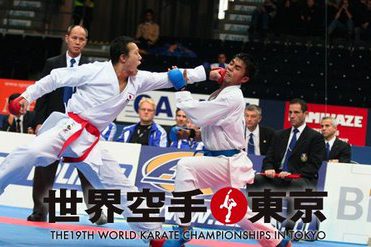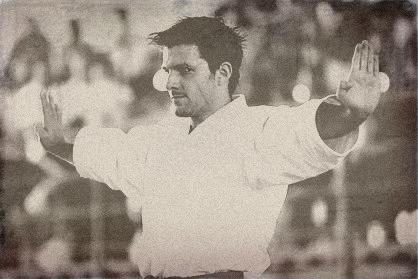Let me tell you about an interesting concept I once came up with:
First of all, have you heard about the game known as Telephone, Broken Telephone, Whisper Game, Whisper Down the Lane, Gossip or Chinese Whispers (this term seems to be most common in Britain)? It has many names, and is often played by kids.
I imagine everyone has played this once or twice.
Here’s a brief explanation: The first player whispers a phrase, or sentence, to the next player. Each player successively whispers what that player believes he or she heard (or didn’t hear!) to the next. Then the last player announces the statement to the entire group, which often proves to be quite amusing.
The game has no winner: the entertainment simply comes from comparing the original and final messages. The Guinness world record was apparently with 614 people!
Okay, now that the intro is out of the way, the interesting thing is of course how this relates to Karate.
Because, as well as providing amusement, the Whisper Game can have educational value. In fact, look up ‘epistemology’ (the study of the properties of knowledge and truth) and you’ll see what I mean.
Ever heard about the unreliability of human recollection?
Information can easily become corrupted by indirect or inaccurate communication, which (not surprisingly) seems to have been quite an issue during the early years of Karate.
The fruits can be seen today, in statements like:
“My style is more effective than yours, because we use our hips better” or “Our sensei claims this old way of clenching the fist is far superior to your way”.
So I have an idea. A mind game:
Begin by choosing one technique.
Let’s say a ‘mawashi uke’, as demonstrated by Uechi Kanei here.
Now imagine that you are going to show that to somebody. Just like the Whisper Game, but instead of whispering a phrase, you show a technique. Then let it be shown and passed around to a couple of other people.
Question: Do you think your original technique will look exactly the same, after passing through ten or fifteen people?
Probably not.
Okay, so let’s try another version:
Choose three techniques done in succession. In other words choose a combination of techniques, and show it to somebody. Then let him/her show it to the next person, who shows it to the next person, and so on. The whisper concept again.
Will your ‘three hit combo’ look the same when the tenth person shows it to you? What about if you have twenty persons? Thirty? A hundred?
Not likely.
Now let’s upgrade it even more:
Show somebody fifty techniques. Then have them pass it on.
In other words, show a kata to somebody.
We both know it will not look the same, even in the second transmission!
So, judging by this, what do you think happens when you try to add a verbal explanation (another level of understanding) to each technique of the kata?!
Then, of course, you need to add additional important information about vital concepts like ‘Yoi no kishin’ (readiness), ‘Chikara no kyojaku’ (the amount of power used for each movement) ‘Waza no kankyu’ (speed/tempo used in each kata movement and position), ‘Tai no shinshoku’ (the amount of contraction and expansion for each movement), ‘Kokyu’ (correct breathing in each kata movement), ‘Chakugan’ (where to look and focus, considering the aim and destination of each technique), ‘Kiai’ (no explanation needed, right?), ‘Hyoshi’ (rhythm, correct flow of movement), ‘Embusen’ (the performance line), ‘Keitai no hoji’ (proper alignment, positioning and posture), ‘Antei’ (balancing stability/mobility), ‘Zanshin’ (situational awareness) and so on.
I mean, it’s just headed for disaster, right?
(And people wonder why there are changes in kata…)
Remember how I said that this game (Telephone, Whisper Game, Chinese Whisper or whatever you call it) proves the unreliability of human recollection? How the traditional transmission of knowledge isn’t perfect?
Well, sometimes kata seems to be nothing more than a sophisticated game of whispering.
And we’re all busy tracing the original whisper(er).



5 Comments